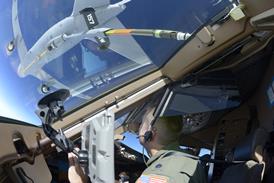South Africa’s Council for Scientific and Industrial Research (CSIR) plans to investigate the use of an unmanned high-altitude platform as a receiver for a bi-static synthetic-aperture radar system that uses a space-based illuminator. In a bi-static radar, the transmitter and receiver are on separate platforms, writes Rob Coppinger.
The illuminating source in this case could be transmissions from a commercial communications satellite, and the research project will be funded by the South African National Defence Force. Similar research is under way in China and the USA.
The study will cover integration of the receiver on to an unmanned platform; radar resolution; motion compensation for the UAV receiver; and passive SAR design.
CSIR will also analyse whether the element that receives the illuminator’s direct signal has to be co-located with the element that receives signals scattered from the ground. Postgraduate students at the universities of Cape Town or Natal may be asked to conduct the research.
“We might not need a UAV. We could use a blimp-like vehicle [for the receiver],” says Willie Nel, principal radar researcher with CSIR’s defence, peace, safety and security division.
He says an airship platform could carry a much larger receiver than a UAV. CSIR has also been examining high-altitude airships for maritime surveillance (Flight International, 14-20 March).
CSIR has been working on synthetic-aperture radar research for 10 years, and the council has bought two systems, a VHF radar that was flown and an X-band system that did not get airborne.
Source: Flight International























